Adding color to hand made soap is a matter of knowing which soap you are working with and what type of colorant you can use in that soap. Soaps can be colored with mica, oxides, natural spices or plant based materials and with artificial lab colors. Learning how to add color to handmade soap will help your creativity when making soaps.
Learning and understanding which color type is best for your soap and how it reacts in each soap type will help you make better decisions of what to use in which soap from melt and pour, cold and hot process soaps.
Adding color to handmade soap can be done at the beginning of cold and hot process soap making as you can add it directly to the oils. If swirls or layers are being designed then adding color at a light trace is better As for melt and pour soap you add colorant at a temperature between 125 – 135 and stir it in gently.
This is a basic concept of adding color to your soap, it helps if you get a better understanding of the colorant type and how it behaves in each soap type.
Table of Contents
- What are the types of colorant used in soap?
- How to color soap with mica?
- How to color soap with pigments?
- How to color soap naturally?
- How to color soap with lab colors?
- Should you color soap with artificial colorants?
What are the types of colorant used in soap?
Colorant types do not vary much. There are typically 4 ways to color your soaps and a fifth way that can be controversial but is still used.
The 5 ways to color your soap are;
- Mica colorant
- Pigments – Oxide & Ultramarine colorant
- Natural Colorants – Herbs, Spices & Clays
- Lab colors
- Artificial colorant
Each of the listed types of colorant above are used in different ways and in different soaps. The amounts used and how well they color all vary hence its good to know where they come from and how they behave in your soap.
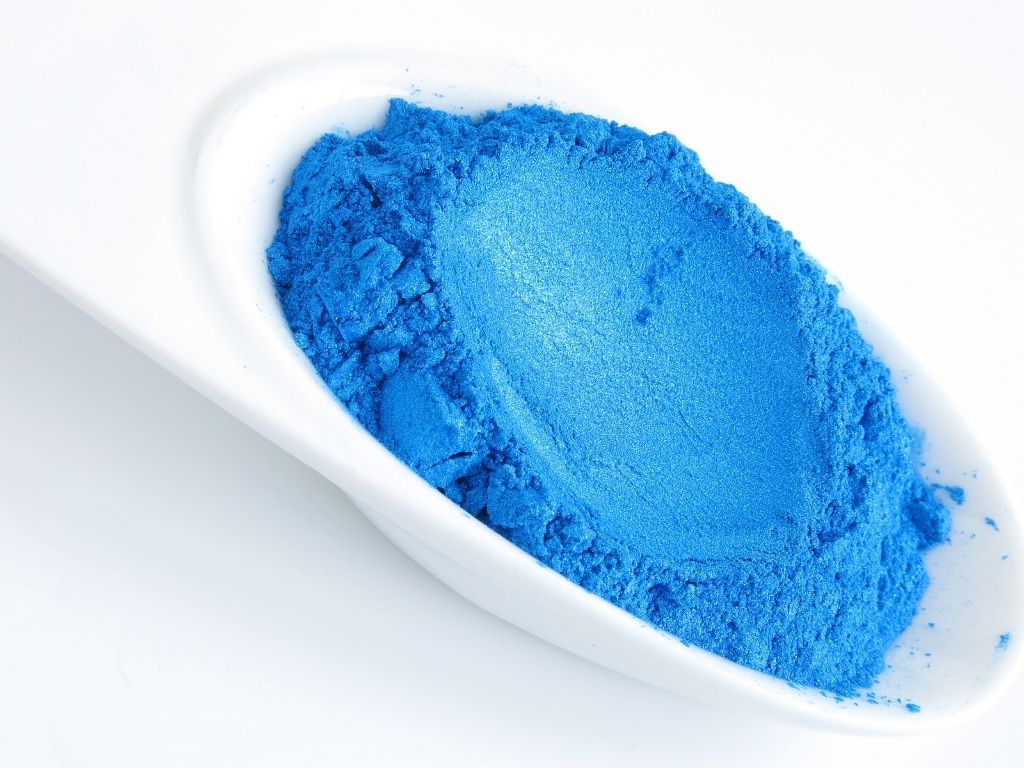
How to color soap with mica?
What is mica colorant?
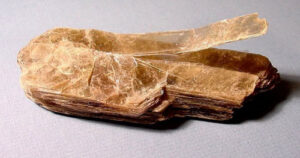
Mica colorants are and are not naturally occurring. Let me explain. Mica itself is a rock but a very flaky rock that is formed in very thin layers. When first mined it looks like a typical rock but as you chip away at it and upon closer inspection you find that it is formed out of many layers of hydrous potassium, aluminum silicate minerals.
These thin layers are what are used to make mica powder. Pure mica when mined and turned in to powder are either a whitish color or an off brown color. Laboratory colors are added to the mica to produce the colors you see today.
Mica powder of any color will always have a shine and shimmer to them. A sparkle look to the actual mica and one that will transfer to your soap.
Although the base rock is naturally occurring the addition of pigments to color the mica are what makes it not so natural anymore. It is because the pigments or dyes are approved by cosmetic regulators that are added to mica, the mica is safe to use in soaps and other cosmetics.
How to Color Cold process soap with mica?
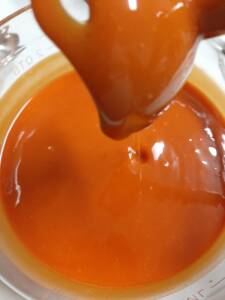
Adding mica to your cold process soap can be done in two ways. The first is to add the colorant directly to the base oils before adding the lye water mixture. This will ensure the color stays consistent throughout the overall end soap.
This technique works best if you are using just one color for your soap.
Micas are all powder based colorants that suspend themselves in your soap mixture. When the lye water is added the colorant is already there and simply incorporates within the soap.
If you are making a soap with layers or swirls then your technique will differ. After you have added your lye water and begin to mix the oils and alkali, stop at a light trace to separate your batter to add your various colors.
There is one caveat to this technique. It can be difficult to incorporate dry mica colorant to soap batter directly. The best way to do this is to premix your mica in a smaller container with rubbing alcohol.
The alcohol will turn your mica into a wet paste, if it is too thick then add more alcohol. What you want is a fluid mixture that is easy to pour. The mica will be suspended in the alcohol but once in the soap batter will disperse and evaporate not affecting your final soap product.
Continue to stick blend your batter to the desired trace to make your soap.
How to Color hot process soap with mica?
Adding mica to your hot process soap differs from cold process in that adding it to the oil does not always work with some colorants. The best way to keep your soap colored and prevent fading or clumping of color is to add the mica at one of two phases during the cooking process.
The first technique for adding mica to hot processed soap is to add the color when you batter is at a light trace prior to the croc pot cooking.
It is best to disperse the mica in distilled water prior to adding it to your soap batter. This will ensure that the mica gets distributed easier than adding it directly to the batter as a dry colorant.
Stick blend the color into your batter until it is thoroughly incorporated and turns your batter in to the color you added.
The second option is to add the mica post cooking when you have reached the mashed potato phase of hot processed soap making.
At this stage the soap batter is more receptive to accepting color. The best way to do this is to firstly disperse the mica in distilled water to make it easier to be be dispersed when mixing into the soap batter with a stick blender or a a the slower method with a spatula.
Continue to mix in the color until all you soap batter is colored fully.
How to color melt and pour soap with mica?
Adding mica as a colorant to melt and pour is a simple matter.
After you have melted your soap it is best to add the mica to the melted soap at a temperature between 125-135 degrees Fahrenheit to ensure even distribution within the melted soap.
Mica does not dissolve in melt and pour only remains suspended within the soap. Adding too little mica will give your soap a light tint while adding more will make it darker but at the same time you run the risk of washing that mica on your skin when taking a bath.
A healthy balance of mica must be maintained. Most persons use mica because of the sparkling effect it has naturally and when added to melt and pour soap.
To learn more about adding color to melt and pour take a look at this article on How to color melt and pour soap.
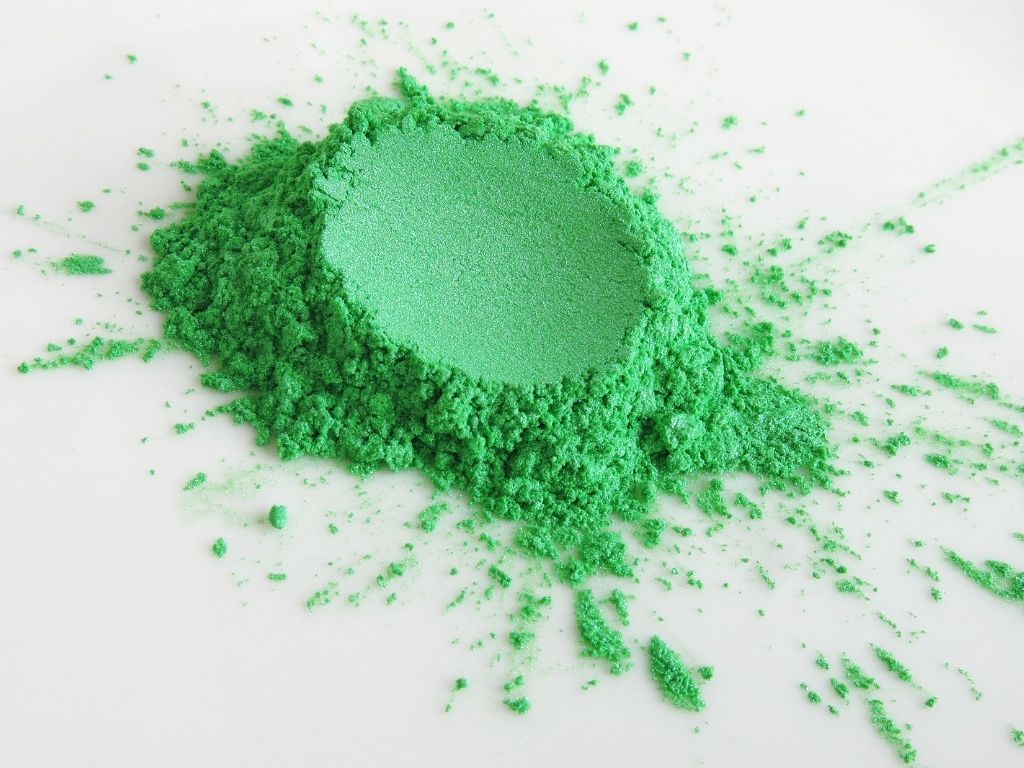
How to color soap with Pigments?
What is a pigment color?
Pigments are can be organic or inorganic. The organic pigments are derived from some sort of mineral in nature. Oxides are typical pigments are of the reddish orange hues of colors.
Other organic pigments can include the primary colors all found in nature. Inorganic pigments are similar to mica but are still sourced from nature but dyed to develop certain colors.
Pigments are not like dyes in that a dye can be dissolved into liquids while pigments cannot. Pigments are suspended within the liquid they are place in, but due to their size per grain in large amounts they can give the perception of coloring the liquid or in this case soap.
Pigments are often used to color paints which makes them great for cold process soap but not always good for hot processed soap.
How to color cold process soap with pigments?
Adding pigments to your cold process soap can be done in two ways. The first is to add the colorant directly to the base oils before adding the lye water mixture. This will ensure the color stays consistent throughout the overall end soap.
This technique works best if you are using just one color for your soap.
Pigments are all powder based colorants that suspend themselves in your soap mixture, this is how your soap is colored. When the lye water is added the pigments is already there and simply incorporates within the soap.
If you are making a soap with layers or swirls then your technique will differ. After you have added your lye water and begin to mix the oils and alkali, stop at a light trace to separate your batter to add your various colors.
There is one caveat to this technique. It can be difficult to incorporate dry pigments to soap batter directly. The best way to do this is to premix your pigments in a smaller container with rubbing alcohol or warm water.
The alcohol will turn your mica into a wet paste, if it is too thick then add more alcohol or water. What you want is a fluid mixture that is easy to pour. The pigments will be suspended in the alcohol but once in the soap batter it will disperse and evaporate not affecting your final soap product.
Continue to stick blend your batter to the desired trace to make your soap.
How to color hot process soap with pigments?
Adding pigments to your hot process soap differs from cold process and from adding mica to hot process soap. Adding pigments to the oil does not always work with hot processed soap. The best way to keep your soap colored and prevent fading or clumping of color is to add the mica at the post cooking process.
Why add pigments post cook? Many pigments for some unknown reason loose their color and vibrancy if they are added pre cooked and go through the hot process phases.
Adding pigments post cook exposes the pigment to less heat and therefore less chance of loosing their vibrance.
It is best to disperse the pigment in distilled water prior to adding it to your soap batter. This will ensure that the pigment gets distributed easier than adding it directly to the batter as a dry colorant.
Stick blend the color into your batter, when you have reached the mashed potato phase of hot processed soap making, until it is thoroughly incorporated and turns your batter in to the color you added .
Continue to mix in the color until all you soap batter is colored fully. In our experience different color pigments react differently to heat. Adding precooking has proven to dull the colors however some dulling occurs for various colors post cooking but not as much as precook color.
Keep notes on the colors you use and learn from your own experience what works best for you.
How to color melt and pour soap with pigments?
Adding pigments to melt and pour soap is the same as adding mica to melt and pour soap.
After you have melted your soap it is best to add the pigment to the melted soap at a temperature between 125-135 degrees Fahrenheit to ensure even distribution within the melted soap.
Pigments do not dissolve in melt and pour it only remains suspended within the soap. Adding too little pigment will give your soap a light tint while adding more will make it darker but at the same time you run the risk of washing that pigment on your skin or wash cloth when taking a bath.
A healthy balance of pigment must be maintained which you will learn from keeping notes as you make your melt and pour soap.
To learn more about adding color to melt and pour take a look at this article on How to color melt and pour soap.
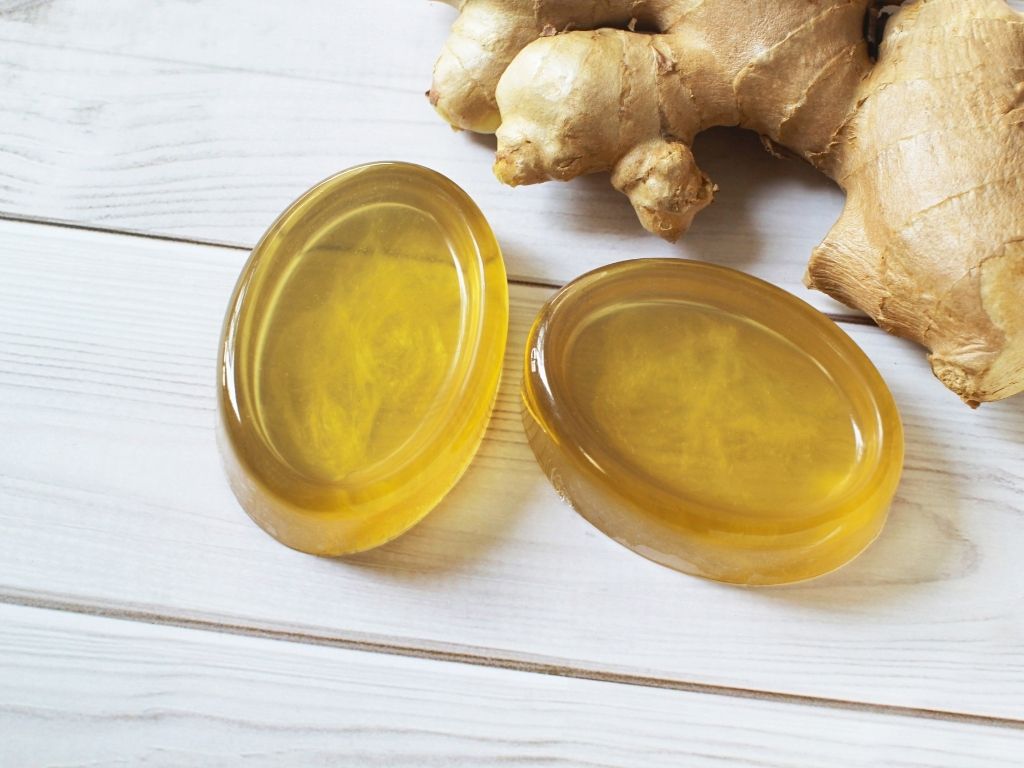
How to color soap naturally?
What is natural colorant for soap making?
Natural colorants for soap making pertain to herbs and spices. The list can go on and on and many herbs and spices can be used and experimented with.
Natural colorant may include the following;
- Activated Charcoal
- Annatto
- Carrots
- Chamomile
- Coffee
- Indigo powder
- Paprika
- Rose Pink Clay
- Turmeric
- Many many more
An extensive list of natural colors can be found at this website Diynatural
Natural colorants are often divided into three classes. Herbs, Spices or Clays. Herbs are often dried herbs broken into powder form. Spices such as paprika and turmeric and of course clay such as rose pink clay and others.
How to color cold process soap naturally?
Adding natural herbs and spices to your cold process soap can be done in two ways. The first is to add the natural colorant directly to the base oils before adding the lye water mixture. This will ensure the color stays consistent throughout the overall end soap.
This technique works best if you are using just one color for your soap.
Natural herbs and spices act much like powder based colorants that suspend themselves in your soap mixture. When the lye water is added the herb or spice is already there and simply incorporates within the soap giving it the color you desire.
If you are making a soap with layers or swirls then your technique will differ. After you have added your lye water and begin to mix the oils and alkali, stop at a light trace to separate your batter to add your various colors.
There is one caveat to this technique. It can be difficult to incorporate natural herbs and spices to soap batter directly. The best way to do this is to premix your herbs and spices in a smaller container with rubbing alcohol.
The alcohol will turn your dry herbs or spices into a wet paste, if it is too thick then add more alcohol. What you want is a fluid mixture that is easy to pour. The herbs will be suspended in the alcohol but once in the soap batter will disperse and evaporate not affecting your final soap product.
Continue to stick blend your batter to the desired trace to make your soap.
How to color hot process soap naturally?
Unlike pigments, natural colorant for hot processed soap can be added either pre or post cook. They mange heat very well however heated or not they do produce more natural tones than bright vivid tones such as pigments and micas.
Add your herb or spice either pre cook at a light trace with a stick blender or post cook also with a stick blender and spatula. Natural colors often do require more colorant per pound than mica or pigments.
The amount added must be gauged carefully when using spices. Certain spicy spices such as paprika can irritate the skin in large amounts. Add these spices sparingly.
Clays on the other hand do require disbursement in water prior to adding them to your soap batter. Clays are larger per grain compared to mica, pigment and many spices hence to avoid clumping of the clay in you soap its best to disburse it with water.
When adding Herbs and spices it is not necessary to disperse them in water prior to adding them but it can help depending on the consistency of your batter pre or post cook.
How to color melt and pour soap naturally?
Adding herbs and spices to melt and pour soap requires not pre-preparation. Once your melt and pour is all melted and at a temperature between 125-135 degrees Fahrenheit you can add your natural colorant directly to the melt and pour soap and stir in slowly.
Keep in mind that herbs and spices are derived from plants and will not dissolve in liquid but will remain suspended n the melt and pour soap giving it its color.
To learn more about adding color to melt and pour take a look at this article on How to color melt and pour soap.
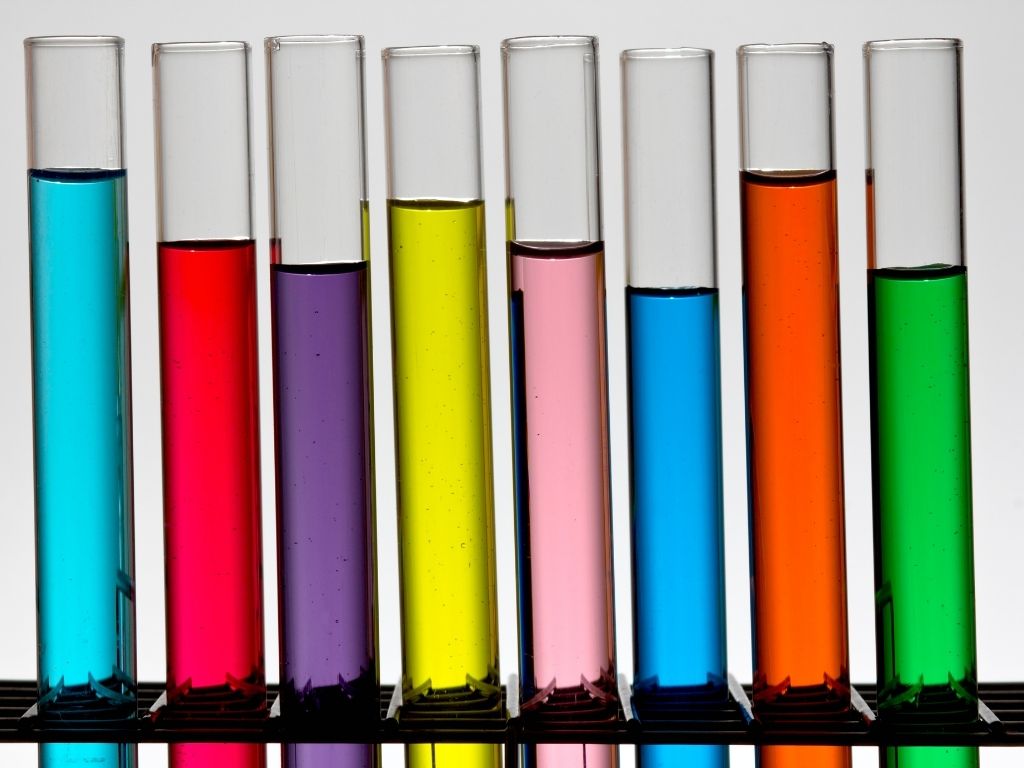
How to color soap with lab colors
What are lab colors for soap making?
Labcolor are highly concentrated dye coloring. These colors are often approved by cosmetics authorities and are approved for use on the skin.
Labcolors are liquid, soluble in water and are very vibrant in color which make them great for soap making. However because they are soluble in water they tend to bleed or expand in your soap.
When using labcolors directly its often advised to dilute the color with water prior to using in your cold or hot process soap. You can learn a bit about diluting labcolors at brambleberry.
How to color cold process soap with lab colors?
Using labcolors in cold process soap is not widely used but it can be done. The color is diluted with distilled water and added manly at light trace to the soap batter.
This dilution is needed however adding excess water to your soap batter can make it a bit more fluid hence more susceptible to bleeding color when using multiple colors.
To avoid this bleeding it is a good practice to pre-measure the amount of diluted color to ensure that it adds up to the exact amount of water needed in your recipe.
How to color hot process soap with lab colors?
To color hot processed soap with labcolors the color should be diluted with distilled water prior to adding it to your post cooked soap.
liquid labcolor is easier to mix in to post cooked hot processed soap than any other colorant. However as with cold process soap it is also susceptible to bleeding but lest likely as most of the water is often cooked off during the process of making hot process soap.
How to color melt and pour soap with lab colors
Using lab colors for melt and pour soap is where these dyes shine the most. Most often it is not necessary to dilute the labcolor however you must introduce the color to the melt and pour one drop at a time.
Labcolors are concentrated colors so a little goes a long way in melt and pour. When using labcolors in hot and cold process soap it must be diluted in water however the melted soap acts like a dilutions solution hence no further dilution is needed.
Add the color in one drop at a time with a pipette and stir in slowly. As the color disperses withing the melt and pour soap the color will blend in easily. Add more as needed until you achieve your desired color.
In recent times lab color blocks have been developed specifically for melt and pour soaps making.
To learn more about adding color to melt and pour take a look at this article on How to color melt and pour soap.
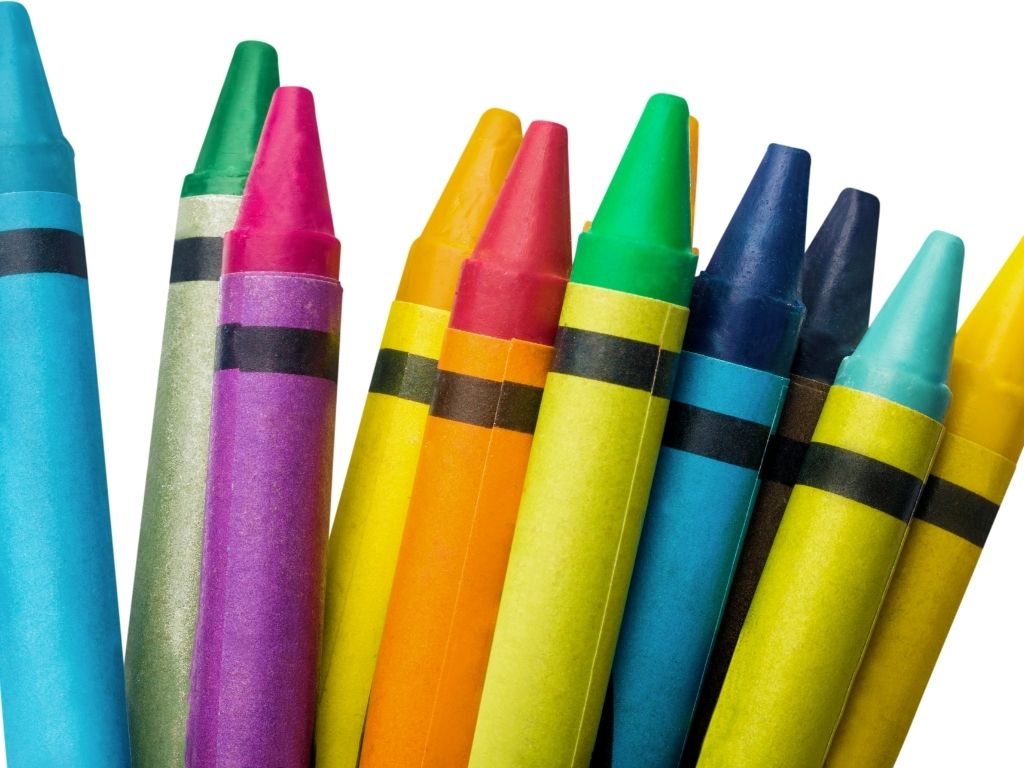
Should you color soap with artificial colorants?
Artificial colorants are those colorants that can add color to your soap but are not particularly on the approved list. A few of these such colorants are;
- Food dye colorants
- Flavored powdered fruit drinks
- Crayons
These types of colorants are often used by some soap makers for personal use but are not recommended by cosmetic authorities and veterans of soap making.
The general consensus for those who use these materials are simple. If they are good to ingest then they should be good to be used in cosmetics.
This is a valid argument as food dyes are used in food, powdered drinks are ingested and crayons have been made safe by FDA regulations as children tend to eat them.
The use of these colorants are completely up to your discretion. It may be ok for personal home use but if your plan to sell you products its best to err on the side of caution and use approved colorants.
